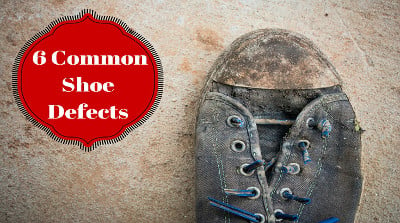 Shoes aren’t made to last forever. Even well-made pairs will eventually show signs of wear and tear with constant use.
Shoes aren’t made to last forever. Even well-made pairs will eventually show signs of wear and tear with constant use.
But that doesn’t always mean the customer is to blame for any wear and tear or other problems with shoes they might buy. Often it’s the manufacturer that’s responsible for managing quality defects in shoes so that customers are satisfied with the finished product (related: How Experienced Importers Limit Product Defects in 3 Stages [eBook]).
Just as garment manufacturers typically use a lot of cutting and sewing during production, those that manufacture footwear often use some very similar production processes (related: Top 6 Most Common Garment Defects). And although shoes are typically made with more robust materials, such as firm leather, rubber and plastics, they’re vulnerable to similar product defects.
Still, there are some common quality defects that are unique to shoes. And whether you’re an importer of shoes that wants to improve quality at your factory in Indonesia or an end-consumer picking out a quality pair from a retail store, it helps to know what to look for.
How to classify quality defects in shoes
Before we get into the top common quality defects in shoes, it’s helpful to understand how QC control professionals typically classify and sort defects by severity (related: 3 Types of Quality Defects in Different Products). Quality defects for shoes are generally sorted into one of the following three categories:
- Defects that fail to meet mandatory regulations or pose a hazard to the user are typically classified as “critical defects”.
- Defects that render the footwear unacceptable by affecting appearance, durability and salability are called “major defects”. A major defect found on a shoe is likely to result in a customer returning the pair.
- Defects that are lower than the desired quality standard but are not likely to result in customer dissatisfaction, product return or complaints are called “minor defects”.
Shoes zoning for defect classification
Most shoes can be divided into two zones, “Zone 1” and “Zone 2”. Zone 1 is generally the most important area in terms of visual appeal because it’s the area most 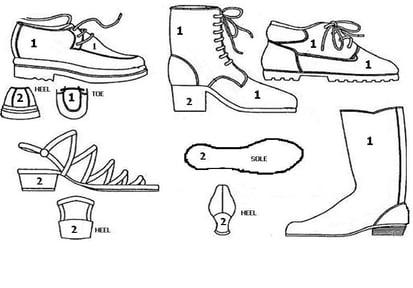 apparent to the customer or wearer. Zone 2 is less important because it includes areas of the shoe that are less obvious to the customer or wearer.
apparent to the customer or wearer. Zone 2 is less important because it includes areas of the shoe that are less obvious to the customer or wearer.
Any defect found in Zone 1 that isn’t critical is more noticeable and more likely to be considered a major defect. The same defect found in Zone 2 is more likely to be classified as a minor defect.
Now that you have an idea of how to sort quality defects in shoes let’s turn to the defects themselves.
1. Excess glue, wax or oil
Excess glue, wax or oil marks are among the most common quality defects found in shoes. These types of residue are especially common because:
- Most shoe production facilities use adhesives and other chemicals during production and
- Factory workers are less likely to protect against or remedy issues like excess glue, wax or oil when rushing to complete an order, which is often the case for most factories.
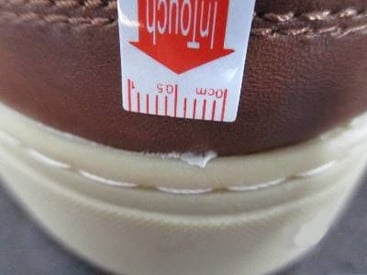 Glue, wax or oil residue can often be cleaned off without difficulty. But if this defect is evident in the finished product, it can be very unsightly to customers and possibly render a shoe unsellable. Excess glue/wax/oil marks are often found in both zone 1 and 2 areas.
Glue, wax or oil residue can often be cleaned off without difficulty. But if this defect is evident in the finished product, it can be very unsightly to customers and possibly render a shoe unsellable. Excess glue/wax/oil marks are often found in both zone 1 and 2 areas.
Preventing excess glue, wax and oil
Shoes are often left with material residue because of the chemicals or adhesives they’re exposed to during manufacturing. But there are some simple ways of preventing this quality defect from remaining on the finished goods, namely:
- Make sure factory workers aren’t using too much glue or other chemicals during production and
- Any excess material left on the shoes after production should be wiped away prior to packaging
There’s no reason why you can’t greatly reduce or eliminate the occurrence of this quality defect because it’s relatively easy to remedy after the fact.
2. Degumming or weak cementing
Usually evident on shoes with rubber soles, such as sneakers, degumming or weak cementing happens when there is insufficient adhesive used when applying the sole to the upper part of the shoe. 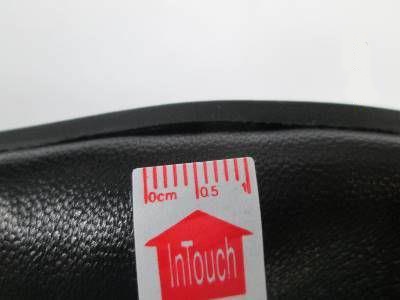 This defect is usually found between the join lines of zones 1 and 2. Generally, however, the problem is considered a Zone 1 defect and a major defect.
This defect is usually found between the join lines of zones 1 and 2. Generally, however, the problem is considered a Zone 1 defect and a major defect.
Preventing degumming or weak cementing
It’s important to make sure that the factory manufacturing the footwear is using the correct type of adhesive. But the more common cause for weak cementing or degumming is not enough adhesive applied between shoe components. Make sure workers are using enough adhesive but not too much. You’ll often find excess adhesive apparent around the seal if too much adhesive was used during binding.
3. Abrasion marks
Abrasion marks are a type of quality defect in shoes that normally appear in Zone 1 areas. These are often considered more serious when found on leather shoes or those with a glossy surface because they’re more obvious. 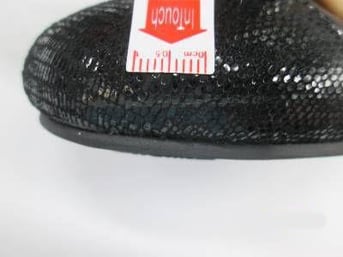
Abrasion marks are usually caused by poor handling by factory workers during the production process.
Addressing abrasion marks found on shoes
If you’re an importer finding abrasion marks on a significant number of pieces in an order, there are a few factors that you should investigate, such as:
- Are factory workers handling the product roughly? Are they wearing gloves while working?
- Are the shoes subject to a lot of unnecessary moving between work stations?
- Does the packaging provide enough protection to prevent abrasions during transit?
Abrasions are not always easy to spot. That’s why having a golden sample with you or a third-party inspection company while checking shoes is extremely useful because it can provide a helpful contrast between what is acceptable and what is not.
4. Asymmetry in shoes
In line with other softlines products, asymmetry can be an issue where different components of shoes do not line up as they should. Some examples of asymmetry commonly found on a shoe or pair of shoes are: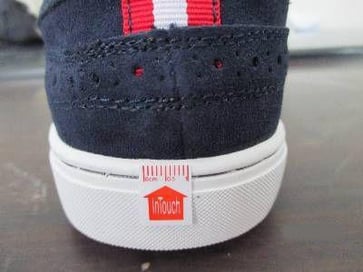
- Where the sole of the shoe does not line up with the body from a front, rear or side view;
- Where certain parts of the shoe aren’t straight, such as the tongue; and
- Where part of one shoe is higher or lower than the same part of its counterpart in a pair (often called “hi-low”)
Asymmetry in shoes is often related to issues with the cutting or fitting of the components.
Finding asymmetry in shoes
Issues with shoe symmetry should be addressed with the manufacturer. The best way to find asymmetry in shoes is to place them side by side or back to back. Essentially, you need to determine whether or not the shoes reflect each other in terms of height, width, color and so on. For example, if you place shoes back to back, you need to observe that the height of the heel is the same on each one, otherwise you have a defect.
5. Incorrect sizing
Most standard shoe sizing tools last for a while. It’s possible, however, that due to an error during the production process, the shoe was labelled and packaged with the incorrect size. This should be considered a major defect because shoes that don’t match specifications for size are likely going to be unsellable.
Preventing incorrect shoe sizing
It’s unusual to find shoe sizing inconsistent due to production processes. Incorrect sizing is usually a result of the way the finished shoes are sorted and packaged. Naturally, shoe sizing discrepancies are more common in factories that are disorganized. And often all that’s needed to prevent incorrect sizing is better procedures for handling, packaging and storing the finished product. Taking a look at a factory’s warehouse and packaging areas can tell you a lot about the likelihood of incorrect sizing.
6. Protruding nail or sharp point
A protruding nail or sharp point is among the least common quality defects in shoes on our list. As with the previous defect, this is not a visual defect, so it does not apply to zones 1 or 2.
Some shoes, especially those made of leather, have nails to bind the sole of the shoes to its upper part during production. If these nails are not properly pressed down, they can protrude into the insole, creating a sharp point that could hurt the consumer. In other cases, a needle might be mistakenly left in a shoe.
Preventing nails or sharp points in shoes
As with garment factories, footwear factories should and generally are equipped with metal detectors. After production is complete, workers set the units on a belt that runs through the machine to look for needles or other sharps that might have been left by mistake.
Factories should also have QC staff examining shoes off the line for signs of sharp points that could be harmful to the end-consumer. If sharp points are found in your order or shoes, the factory needs to investigate which process is responsible and eliminate the cause.
Conclusion
Shoes can be bought to make a fashion statement, or simply provide utility and comfort. Either way, most shoes are manufactured with some level of quality in mind. And as a customer or manufacturer, it helps to look out for some of the common quality defects in shoes that could affect you or your business.
With awareness of these defects, you can safeguard yourself against shoddy quality. Ultimately, inspecting your shoes at the source before they ship is the best way to ensure you’re getting the quality you paid for.
Have you encountered other footwear defects in your own experience? Share what defects you found and how you addressed them in the comments below!







